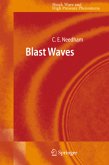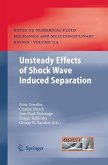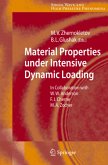The sensitivity of an explosive is not a well defined property of the material but rather a complex pattern of behavior. Unlike the response to strong, planar shocks which is for the most part predictable and reproducible, explosives' response to multidimensional and weaker stimuli is much more complicated.
The present volume is the first compendium to assemble in a single text our present knowledge about the vast range of non-shock ignition mechanisms and responses, where initiation is not prompt, and involves a series of steps that may or may not lead to a steady detonation.
The 11 extensive chapters in this volume are: Context and Complexity of Non-Shock Initiation (B. W. Asay), Transport Phenomena for Non-Shock Initiation Processes (L. Perry), The Chemical Kinetics of Solid Thermal Explosions (B. F. Henson), Classical Theory of Thermal Criticality (L. G. Hill), Deflagration Phenomena in Energetic Materials (S. I. Jackson), Mechanical and Thermal Damage (G. R. Parker and P. J. Rae), Cook-off (B. W. Asay), The Deflagration-to-Detonation Transition (J. M. McAfee), Friction (P. M. Dickson), Impact and Shear Ignition by Non-Shock Mechanisms (J. E. Kennedy), Spark and Laser Ignition (J. E. Kennedy).
Each chapter is self-contained and can be read independently of the others, though, they are thematically interrelated. They offer a timely reference, for postgraduate students as well as professional scientists and engineers, by laying out the foundations and discussing the latest developments including yet unresolved challenging problems.
Los Alamos National Laboratory is an incredible place. It was conceived and born amidst the most desperate of circumstances. It attracted some of the most brilliant minds, the most innovative entrepreneurs, and the most c- ative tinkerers of that generation. Out of that milieu emerged physics and engineering that beforehand was either unimagined, or thought to be f- tasy. One of the ?elds essentially invented during those years was the science of precision high explosives. Before 1942, explosives were used in munitions and commercial pursuits that demanded proper chemistry and con?nement for the necessary e?ect, but little else. The needs and requirements of the Manhattan project were of a much more precise and speci?c nature. Spatial and temporal speci?cations were reduced from centimeters and milliseconds to micrometers and nanoseconds. New theory and computational tools were required along with a raft of new experimental techniques and novel ways of interpreting the results. Over the next 40 years, the emphasis was on higher energy in smaller packages, more precise initiation schemes, better and safer formulations, and greater accuracy in forecasting performance. Researchers from many institutions began working in the emerging and expanding ?eld. In the midst of all of the work and progress in precision initiation and scienti?c study, in the early 1960s, papers began to appear detailing the ?rst quantitative studies of the transition from de?agration to detonation (DDT), ?rst in cast, then in pressed explosives, and ?nally in propellants.
The present volume is the first compendium to assemble in a single text our present knowledge about the vast range of non-shock ignition mechanisms and responses, where initiation is not prompt, and involves a series of steps that may or may not lead to a steady detonation.
The 11 extensive chapters in this volume are: Context and Complexity of Non-Shock Initiation (B. W. Asay), Transport Phenomena for Non-Shock Initiation Processes (L. Perry), The Chemical Kinetics of Solid Thermal Explosions (B. F. Henson), Classical Theory of Thermal Criticality (L. G. Hill), Deflagration Phenomena in Energetic Materials (S. I. Jackson), Mechanical and Thermal Damage (G. R. Parker and P. J. Rae), Cook-off (B. W. Asay), The Deflagration-to-Detonation Transition (J. M. McAfee), Friction (P. M. Dickson), Impact and Shear Ignition by Non-Shock Mechanisms (J. E. Kennedy), Spark and Laser Ignition (J. E. Kennedy).
Each chapter is self-contained and can be read independently of the others, though, they are thematically interrelated. They offer a timely reference, for postgraduate students as well as professional scientists and engineers, by laying out the foundations and discussing the latest developments including yet unresolved challenging problems.
Los Alamos National Laboratory is an incredible place. It was conceived and born amidst the most desperate of circumstances. It attracted some of the most brilliant minds, the most innovative entrepreneurs, and the most c- ative tinkerers of that generation. Out of that milieu emerged physics and engineering that beforehand was either unimagined, or thought to be f- tasy. One of the ?elds essentially invented during those years was the science of precision high explosives. Before 1942, explosives were used in munitions and commercial pursuits that demanded proper chemistry and con?nement for the necessary e?ect, but little else. The needs and requirements of the Manhattan project were of a much more precise and speci?c nature. Spatial and temporal speci?cations were reduced from centimeters and milliseconds to micrometers and nanoseconds. New theory and computational tools were required along with a raft of new experimental techniques and novel ways of interpreting the results. Over the next 40 years, the emphasis was on higher energy in smaller packages, more precise initiation schemes, better and safer formulations, and greater accuracy in forecasting performance. Researchers from many institutions began working in the emerging and expanding ?eld. In the midst of all of the work and progress in precision initiation and scienti?c study, in the early 1960s, papers began to appear detailing the ?rst quantitative studies of the transition from de?agration to detonation (DDT), ?rst in cast, then in pressed explosives, and ?nally in propellants.








